THE SURPRISE OF AUNT PATSY
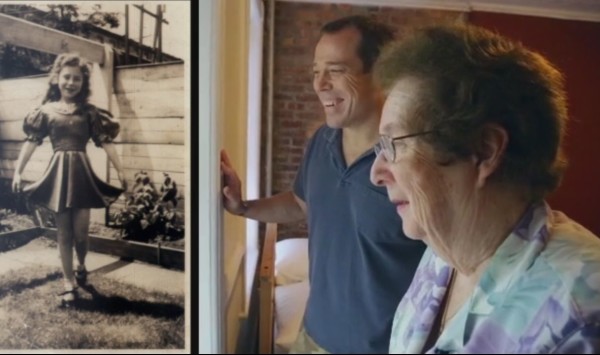
******************************************************************************************************************************** Brownstone Detectives investigates the history of our clients’ homes. The story you are about to read was composed from research conducted in the course of one of those investigations. Do you know the history of YOUR house? ******************************************************************************************************************************** Last year, after an extensive search, I had the pleasure of discovering “Aunt Patsy.” Having located a nephew of hers in Tennessee, I informed him (a bit nervously) about my project – I was writing a book about our Macon Street house (who writes a book about their own house?) – and told him that I’d love to talk with her (if it was possible). I was surprised to learn that she lived quite close by – the next borough over, actually, in Floral Park, Queens. He gave me her telephone number, telling me she would love to see the house again. “She’s quite a character,” he half-warned and half-encouraged me. Over the following months, Patsy and I talked on the phone for stretches at a time about the house, her childhood memories of the block, and sometimes about nothing in particular. Often, she asked me about my family, my work, and about my life in Bedford-Stuyvesant. Through these conversations we began to develop a relationship that was at once effortless and engaging. In a way, at some point during our talks, she “became” Aunt Patsy. Born in 1936, Patsy lived at my Macon Street house for the first 15 years of her life. Her mother, who was in her 40s […]
BUTCHER, BAKER, UNDERTAKER (1895)
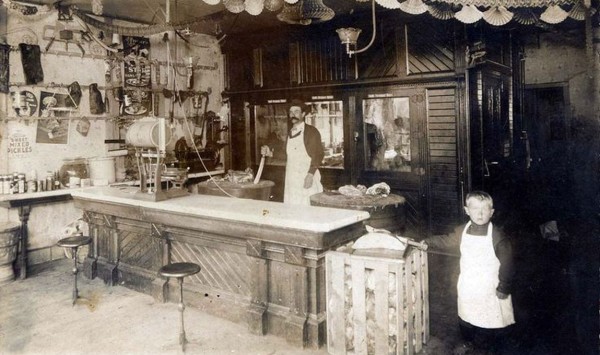
******************************************************************************************************************************** Brownstone Detectives investigates the history of our clients’ homes. The story you are about to read was composed from research conducted in the course of one of those investigations. Do you know the history of YOUR house? ********************************************************************************************************************************As the sleeping giant that is Bedford-Stuyvesant’s Ralph Avenue begins to awaken from its slumber, it is tempting to take a look back at some of the businesses that once lined this bustling thoroughfare. STUYVESANT EAST OF YORE The eastern section of Stuyvesant was alive with industry in the late part of the 19th and the early part of the 20th centuries. As houses had recently been built along the main streets, stores, schools, and churches had gone up along the avenues and on corners, dotting the landscape with their offerings. The neighborhood, after its initial build-up in the 1890s, became completely self-sufficient in terms of goods and services. Residents of Macon Street, like those from the other streets in the neighborhood, found themselves surrounded by a variety of offerings that would allow them – and their servants, in some cases – to satisfy the needs of their families easily and quickly. THE BUSTLING BUSINESS CORRIDOR THAT WAS RALPH AVENUE Starting in the late 19th century, Ralph Avenue became a busy local business corridor filled with a wide variety of shops and stores that suburban families needed to support households of consumers. Since its inception, the avenue had public transportation, in the way of horse-drawn omnibuses and then later a streetcar line, […]
THE METAMORPHOSIS OF A BROOKLYN BLOCK
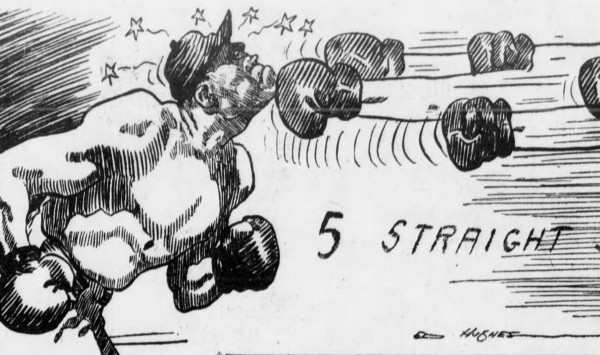
After showcasing some serious open-air ball playing, Saratoga Field was about to go indoors. There it would bear witness to a number of more diverse activities – dancing, fighting, and dreaming. But not necessarily in that order. By 1912, the owners of the block that Saratoga Field had utilized would realize the cash potential of developing the grounds for its marketing to commercial investors. Accordingly, they divided the land up into lots and sold it all off to real estate developers. Shortly afterwards, three new entertainment businesses would appear on the block – the Broadway Boxing Arena, the Halsey Theatre, and the Arcadia Dance Hall, all just across the street from the Brooklyn Rapid Transit (BRT) carbarn and Saratoga Square. THE BROADWAY ARENA The Broadway Arena (also known as the Broadway Sporting Club and the Broadway Exhibition Association Building) sat next to the Halsey Theatre (an alley in between), operating for close to 40 years. It was built around 1912 and had a capacity of 4,500 people. It would become Brooklyn’s top fight arena in the 1930s and 1940s, exhibiting the boxing skills of some of the country’s more well-known fighters, such men as Al Tiernan, Arturo Godoy (who fought Joe Louis in 1940), and Pete Sanstol. By 1951 the Broadway Arena was closed, the victim of competition from the television set. Its last boxing match was held on 29 November 1951. THE HALSEY THEATRE The Halsey Theater, a 2,100-seat theater, which originally presented both vaudeville and silent movies, was […]
THE GREENEST BLOCK IN BROOKLYN (1902)
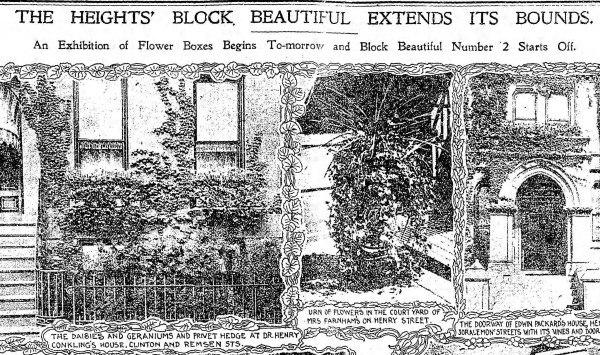
******************************************************************************************************************************** Brownstone Detectives investigates the history of our clients’ homes. The story you are about to read was composed from research conducted in the course of one of those investigations. Do you know the history of YOUR house? ******************************************************************************************************************************** As the judging for this year’s “Greenest Block in Brooklyn” award heads into its final round, we bring you a history of the concept of beautifying and greening neighborhoods in the borough of Brooklyn. A BRIEF HISTORY OF BLOCK BEAUTIFICATION IN BROOKLYN Before the Botanic Garden arrived on the scene with its “Greenest Block in Brooklyn” initiative in the 1990s, there was “Block Beautiful.” A number of private Brooklyn citizens, wishing to bring about the greening of their neighborhood, initiated an organized effort to stimulate an active interest in its residents utilizing their green thumbs to good effect. This earliest organized “block beautification” project began somewhat simultaneously in 1902 on two separate streets and section of the borough – Henry Street (in Brooklyn Heights) and on Quincy Street (in the Bedford Section). Led by Miss Zella Milhau of 291 Henry Street, the effort was called “Block Beautiful,” and was an initiative to “green” the block upon which she and her family lived, with the hope that this effort would be replicated throughout the city. Milhau, an artist and active member of the Municipal Art Society and the Fine Arts Club of Manhattan, who lived in the Columbia Heights section on Henry Street between Joralemon and State streets, originated the idea and got […]
THE FILTHY STREETS OF STUY HEIGHTS (1891)
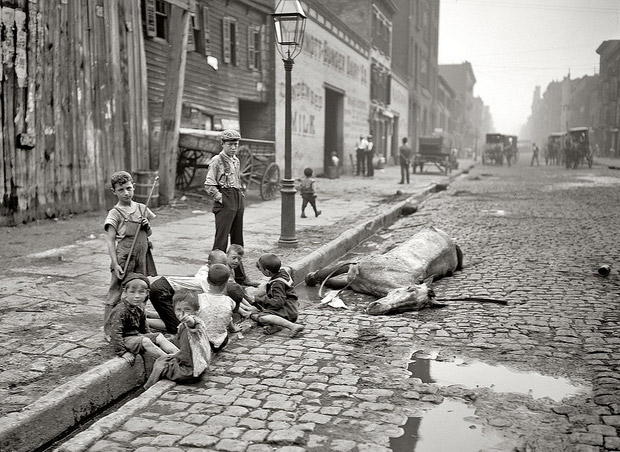
******************************************************************************************************************************** Brownstone Detectives investigates the history of our clients’ homes. The story you are about to read was composed from research conducted in the course of one of those investigations. Do you know the history of YOUR house? ******************************************************************************************************************************** “I have lived in Macon Street since Nov. 28, and there has not been a soul to clean that street during that time.” It happened then as it does now – people complain about the condition of their streets and their neighborhood, in general. The above quote was from 1891, back when Stuyvesant Heights was in the throes of a major construction expansion. Apparently, there were construction materials everywhere – filling the streets and clogging the sewers. “There are at least a thousand tons of sand and stone in the street with grass growing all over it,” the same commenter noted. “The sewer is filled up with sand.” It got so bad for this section of town – due to the relatively unregulated construction industry – that every time there was a heavy rain storm, the article continued, residents’ cellars were “flooded with one or two feet of water.” Ironically, our current 21st century Mayor’s Office declared a few years ago that the streets of Bedford-Stuyvesant were among the dirtiest in the city. Specifically, the office noted that the cleanliness of 15% of our streets was “unacceptable.” Now that Bed-Stuy is a built-up section of our city, maybe we don’t have much of an excuse for the filth. But it must […]
“GROUND TO PIECES” IN THE CUT (1914)
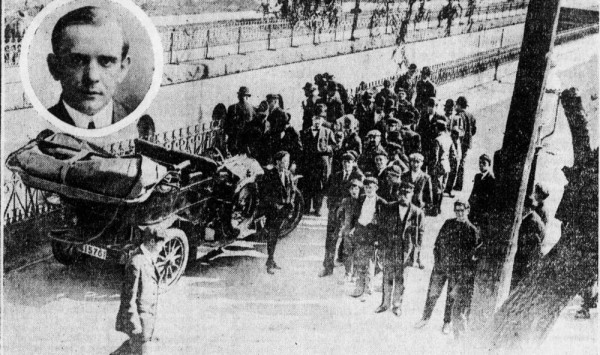
Martin Conly was the first to die by the cut in 1908. He and a boyhood “chum” were back from Coney Island at about 1 a.m. when the automobile they were traveling in ran into the low iron guard rail. Conly, the son of a prominent Brooklyn Democratic ward leader, was thrown from the vehicle and onto the tracks below. He was killed instantly. The Long Island Rail Road, which was not held accountable in court for the death, would later remove the light iron fencing and replace it with a thick concrete wall to prevent the same thing from happening again. Just a month later, though, before they could eradicate the danger – it happened again. Five young men, enjoying a “joyride” in a “large touring car,” heading north on Howard Avenue toward Atlantic Avenue, plunged into the wide trench and landed on the tracks “25 feet below,” just as a train was scheduled to pass. It was 2:10 a.m. It wasn’t until 27 December 1914, though, that an automobile would plummet into the cut while a passing train “ground to pieces” a man and his automobile. It had been traveling south on Howard Avenue towards Atlantic Avenue, when it crashed into the iron fencing. Unfortunately, the Long Island Rail Road had not found it necessary to build the same type “re-enforced” concrete wall on the north side of the cut (as it had on the south). MITIGATING THE CUT Today, the mitigation is noticeable – but just barely. […]
SURVIVING THE ATLANTIC AVENUE “CUT” (1920)
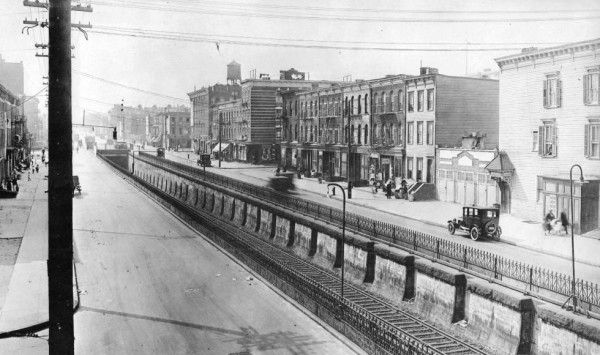
O! What a difference 90 years makes. The Long Island Rail Road (L.I.R.R.) “Cut,” which divided the eastward and westward sides of Atlantic Avenue, was a much more scenic feature back in the day. In this photograph taken looking eastward from Howard Avenue, a small family walks with a baby carriage at the lower right, and a woman, above them, looks out of the window. Shoppers along with residents of the houses fill the sidewalks, as they run errands, talk with one another, and take in the streets scenes, themselves. These scenes were representative of the entire stretch of the avenue of the time. As the automobile came into prominence, though, and repair shops and filling stations began congregating along the avenue, the people began to disappear, along with their residential buildings, the latter of which were really not that old at the time. Sadly, none of these buildings appear to be standing today. Notice the number of ornate Victorian-era wood-frame houses that were in existence then. Also, notice the cast-iron fencing that the L.I.R.R. used to keep pedestrians from falling – and drivers from plunging – down into the “cut.” Unfortunately, for a number of motorists driving in the direction of the tracks, this fencing was of little help. With the low height of the old cast iron fence that lined the “cut,” many night-time drivers had a difficult time realizing – as they perpendicularly approached the “cut” in the dark – that there was actually no path between […]
BROWNSTONE DETECTIVES IN THE NY POST!
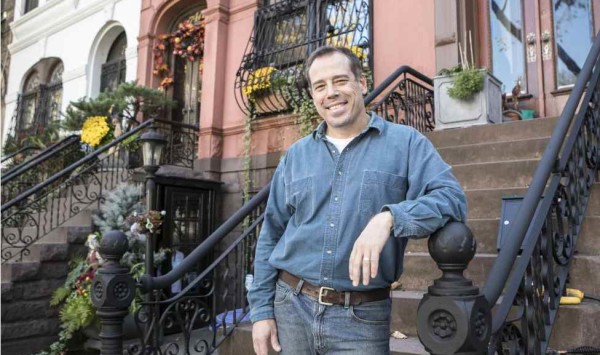
“Because Brooklynite Brian Hartig delves into the history of old New York homes every day, he comes across a few ghost stories,” wrote New York Post writer, Emily Nonko. Hartig, who creates House History Books containing the full histories of his clients’ Brooklyn houses, was told recently that his house was haunted by a benign spirit. (Read the rest of the story at the New York Post website.)
AFTER “NEGRO,” BEFORE “COLORED,” Pt. II (1920)
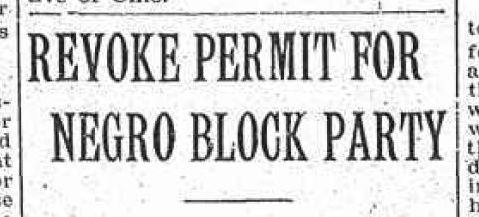
(Cont.’d from last week’s “After ‘Negro,’ But Before ‘Colored,’” Pt. I.) The permit for the “colored” Macon Street block party was revoked by the City at the last minute. Apparently, the white residents on Macon Street between Reid and Stuyvesant avenues, “who have been disturbed by the prospect of a block party there tonite for the benefit of a negro church are now at ease.” “The permit,” the July 1920 Brooklyn Eagle story noted, “which had been issued for roping off the block party” was revoked by the Highways Department, whose officials explained that Lucy Mayers had presented a petition from a number of residents on the block, asking permission for the party to be held.” However, as the residents of the block were predominantly white, when “some of them heard of the block party to be held for negroes they presented a counter petition with 140 names, a majority of the residents of the block, to the department, which then revoked the permit.” Police at the Ralph Avenue station said that “they had never been notified of the permit and they would have objected to the party,” if it had been held. The article does not say if the police meant that they would have objected to a party held by “colored folks” that was objected to by white residents, or if they would have objected to a “colored” block party, in general. The block party’s church committee stated that they were “returning the money for tickets bought for […]
THE RETURN OF AUNT CAR (2013)
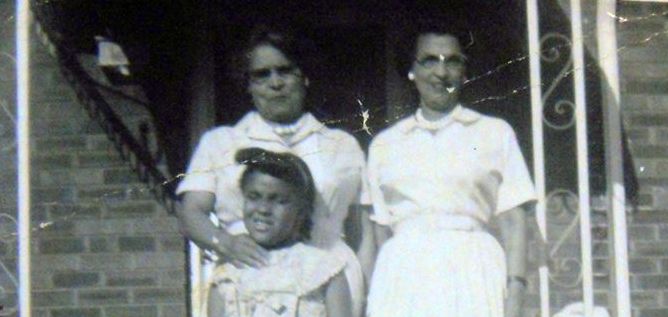
A few years ago, I found a posting on a genealogical site searching for information about a person named Caroline Gill. One of the owners of my house went by that name, so my interest was piqued. I wrote and gave the poster what information I knew, hoping for an exchange. As it turned out, that poster, Stacey Maupin Torres, had more information about Caroline than I ever did, which she began to share with me. In her reply, though, she casually mentioned some information that she didn’t know I already had. She told me that her “Aunt Car” had lived at 738 Macon Street in Brooklyn. As I read her message, I began to realize that I had not divulged to her that I lived in her aunt’s old house. So, imagine Stacey’s surprise when I told her that I was writing to her from that very house! After this revelation, every email we wrote to one another seemed to be pages in length. Stacey would tell me details about her Aunt Car’s and Uncle Henry’s lives (they lived at 738 Macon Street in the 1950s and 1960s), and I would tell her what 738 Macon Street is like now, and send her pictures of the house – including invitations to come and visit. Stacey told me that, in the 1960s, she had lived in Queens and had been to 738 Macon Street with her family many, many times. Her Aunt Car, she explained, had had large family gatherings […]